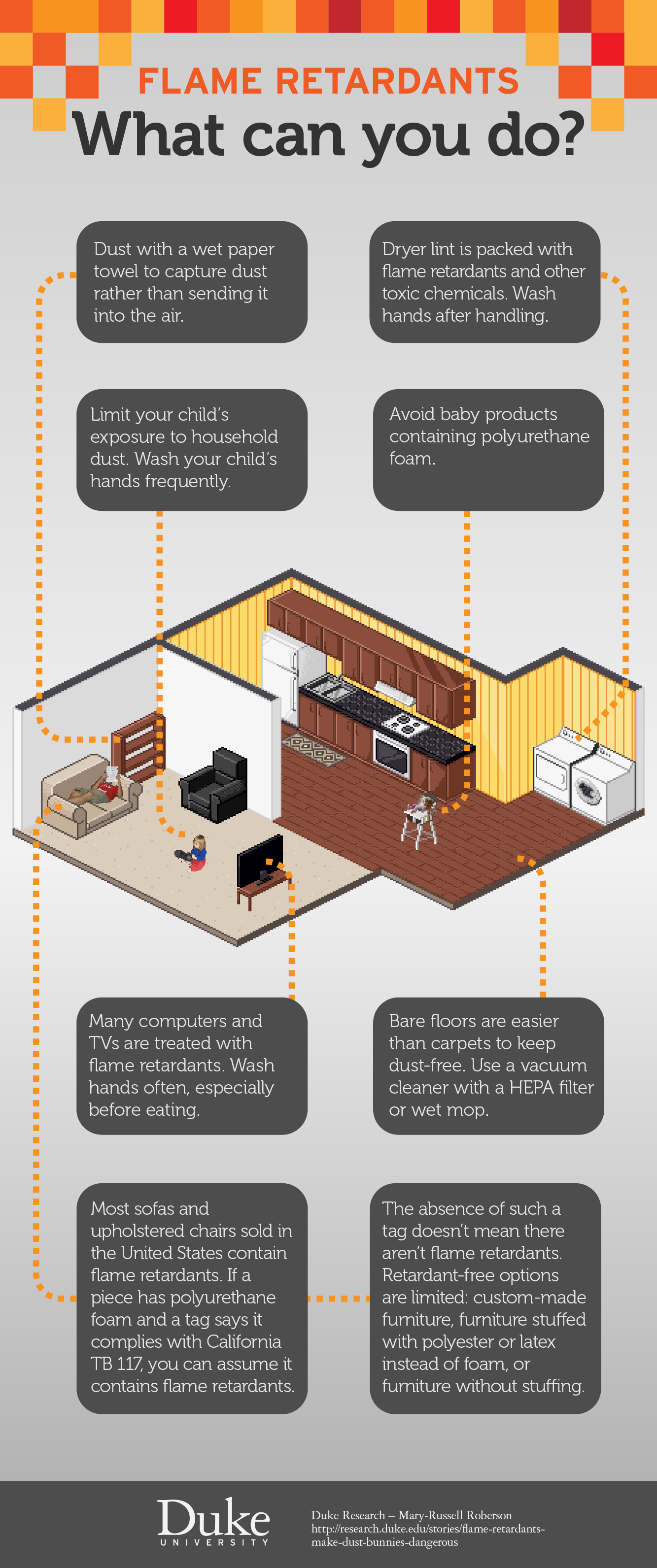Firemaster 550 is a chemical cocktail of brominated and organo-phosphorus flame retardants produced by Chemtura Corp. On its website, Chemtura’s flame retardant business president, Anne Noonan, talks about Firemaster 550’s use in polyurethane foam cushions in furniture and it’s ability to save lives and enhance public safety.
Firemaster 550 came to market as the use of chemical flame retardants containing PBDEs were being phased out. Due to laws that allow corporations to keep secret the chemical recipes developed, the research community could not identify this chemical until 2008.
While it may be true that flame retardants delay the start and spread of fires during home accidents, some of the chemicals currently used in furniture on the market may also pose a threat to public health (see a blog from our own, Laura Macaulay about her research).
The name Firemaster 550, and the controversy over the use of flame retardants in furniture, might ring a bell if you keep your eyes on the news. That’s because last year the Chicago Tribune published a five-part series called “Tribune Watchdog: Playing with Fire” in which they exposed information about flame retardant chemical companies’ close ties with Congressional witnesses (including fire marshals and a doctor) who testified to the ability of flame retardant chemicals to provide protection and vital time buffers during house fires.
More news articles from the Chicago Tribune, the New York Times, and others continue to investigate the controversial effectiveness and potential health risks of flame retardant chemicals, which are used across the United States in products from sofas to computers.
Heather Stapleton, Ph.D., is one of our leading researchers and primary investigators in the flame retardant saga. One of the papers she co-authored last year with Heather Patisaul from NC State, is titled “Accumulation and Endocrine Disrupting Effects of the Flame Retardant Mixture Firemaster 550 in Rats: An Exploratory Assessment” and is interesting for multiple reasons. This study was the first to demonstrate that Firemaster 550 poses potential health risks by identifying a chemical component of Firemaster 550 in fat tissues of exposed rats, which indicated the potential for this compound to enter the placenta during pregnancy. As we’ve been uncovering this month, exposure to certain chemicals during this important period of development (in utero) can have lifelong effects. Another interesting tid-bit is that the study tested chemicals at concentrations lower than that which industry-funded experiments use.
This paper brings to light questions of whether industry is doing enough research before introducing new chemicals to the market: are the chemicals used to replace known health offenders in fact safer replacements? are flame retardant chemicals truly necessary, given their potential health risks and widespread use?
On Thursday Anthony Oliveri, a Ph.D. Candidate in Ed Levin’s lab, will be blogging with ToxInsider about organophosphorus flame retardants similar to Firemaster 550 and their potential toxicity and chemical similarity to chlorpyrifos, a banned pesticide known to cause neurological effects.





